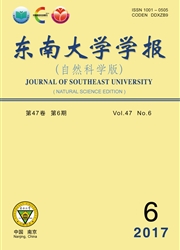

 中文摘要:
中文摘要:
采用数值分析方法,对具有多个不同参数的RC框剪结构模型进行了多条强震记录作用下的弹塑性时程分析和Pushover分析.通过对比各算例的计算结果,归纳总结了RC框剪结构的典型耗能分布模式和损伤机制,并对影响结构损伤机制的因素进行了讨论.结果表明,RC框剪结构在罕遇地震作用下可能会形成“强墙肢弱连梁”和“强连梁弱墙肢”的典型损伤机制.前者可使结构获得稳定可控的耗能分布模式,后者则会导致结构形成位置不确定的局部耗能集中层.连梁与墙肢相对刚度比是影响结构损伤机制的重要因素,较小的连梁与墙肢相对刚度比可使结构易于形成“强墙肢弱连梁”的损伤机制;改变框架和剪力墙的相对比例则不会影响结构的损伤机制.
 英文摘要:
英文摘要:
Several numerical models of reinforced concrete (RC) frame-shear-wall structures with different parameters were analyzed by the nonlinear time-history analysis method and the Pushover method under a serial of strong earthquake records. Based on the analysis results, the typical distri- bution mode of hysteretic energy of RC frame-shear-wall structures and the corresponding structural damage mechanism were summarized and evaluated. And the influential factors of structural damage mechanism were discussed. The results show that two typical structural damage mechanisms may be formed in the RC frame-shear-wall structures under the major earthquake intensity level, i. e. , "strong wall limb-weak coupling beam" mechanism and "strong coupling beam-weak wall limb" mechanism. The former leads to steady and controllable distribution mode of hysteretic energy, while the latter results in energy localization at uncertain story. The structural damage mechanism is determined by the relative stiffness of coupling beam and wall limb in the shear wall rather than the relative ratio of frame and shear wall in the whole structure. And the small relative stiffness of cou- pling beam and wall limb can result in "strong wall limb-weak coupling beam" mechanism in the structure.
 同期刊论文项目
同期刊论文项目
 同项目期刊论文
同项目期刊论文
 期刊信息
期刊信息
